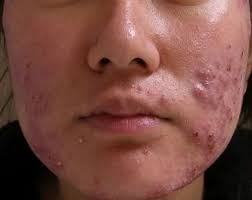New Developments In Understanding Of Sensitive Skin

Sensitive skin is a condition of subjective cutaneous hyperreactivity to environmental factors. Subjects experiencing this condition report exaggerated reactions when their skin is in contact with cosmetics, soaps, and sunscreens and they often report worsening after exposure to dry and cold climates.
Recent findings support the connection between skin microbiota and sensitive skin. Neurohormones diffuse in sweat and epidermis leading skin bacterial microflora to be largely exposed to these host factors. Bacteria can sense a multitude of neurohormones. Substance P (SP) is stimulating the virulence of Bacillus and Staphylococci. The action of SP is highly specific with a threshold below the nanometer level. In a recent study of the mycobiome of sensitive skin was more phylogenetically diverse than that of non-sensitive skin. Lactobacillus and Mucor racemosus were more abundant on sensitive skin than nonsensitive skin, whereas Malassezia restricta was less abundant. Both skin microbiome and mycobiome varied according to the perceived skin sensitivities of the subjects.
Sensitive skin is not limited to the face and the scalp is an area frequently involved: sensitive scalp showed disrupted barrier function, abnormal sebum amount and composition, as well as the perturbed microbiome, which might be the direct cause. The role of microbiome and mycobiome in sensitive skin needs more investigation as well as the possible neurogenic alterations. A complete understanding of this peculiar syndrome may lead to the development of new and more effective pharmacologic and cosmetic treatments.
Bibliography
Misery, Laurent. 2023. “Sensitive Skin Testing.” In Handbook of Cosmetics Science and Technology, by Elsa Jungman, Kazutami Sakamoto, Howard I. Maibach Frank Dreher, 182-189. Boca Raton, London, New York: CRC Press.













